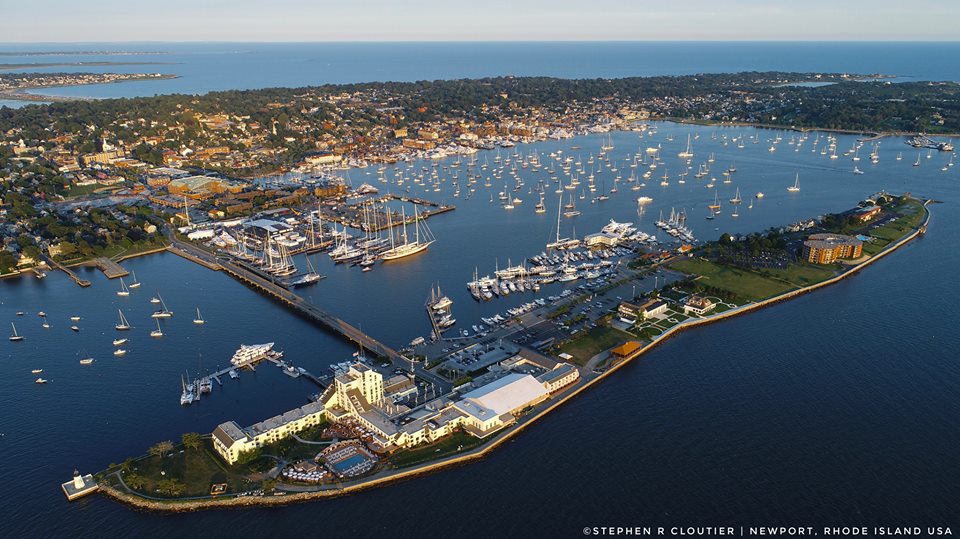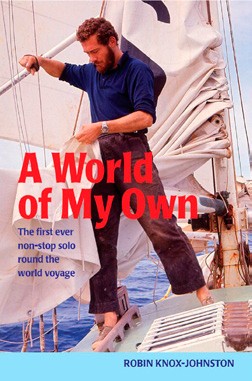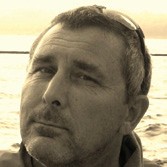By Joe Cooper
Congratulations to the entire team of lads and ladies from The Land of the Long White Cloud, aka Kiwis. Much has been said about Kiwi innovation with respect to bikes (although Pelle Petterson must be laughing his stern post off), X-box controls, the new generation of young’uns and all the other stuff. What I have not seen remarked on anywhere is the social and historical context behind this success, the almost inbuilt ability to innovate. New Zealand is a tiny nation of a few islands and a lot of sheep at what was, before the internet afforded ‘easy’ access to the outside world, pretty close to the end of the world, on the very edge of the windswept wastes of the Southern Ocean. Consequently, Kiwis have a long history of making things and fixing their own stuff. “DIY” could be the Kiwi national motto and nowhere is this cultural vein more obvious than in their recent win. Bloody good job, you lot.
Of all the people watching this spectacular performance arguably, two cities with knowledgeable and skilled sailors, sizable populations of former (and in one case, current) AC competitors, and sizeable populations of Kiwis and Aussies are Annapolis and Newport. Any sentence with those two towns in it is not far away from the discussion on which is the Sailing Capital of the World.
I was reminded of this debate on a recent Thursday, while volunteering at the NBYA Opti Regatta, hosted by Ida Lewis YC and sailed in the basin between Goat and Rose Islands. Sheep-dogging some 70 Optis from King Park to the Astro-Surf on a sunny morning in July means being alert for all manner of traffic coming and going around the south end of Goat Island.
This glorious morning scene was full of powerboats of all shapes and sizes, from the boys in their Bayliners all the way up to a selection of Mega Yachts. The Jamestown Ferry was plying its circuitous route back and forth and Oldport Launch service was shuttling sightseers from downtown to Fort Adams. There were the oddly shaped, so called Life Boats, complete with signage saying ‘150 passengers only’ shuttling punters from a Carnival lines cruise ship anchored at the top end of our proposed racecourse around to Perotti Park public dock, also the destination for the Providence to Newport Fast Ferry. There were a goodly supply of guys in center cockpit skiffs going fishing, trawlers coming home from fishing and one bloke sailing around in a Dyer 10. The charter 12 Metres were up and about, entertaining groups of sunburnt insurance salesmen from Iowa with the experience of sailing on an America’s Cup yacht.

The Opti regatta had a circle for the Green fleet and one for the other colors. I, and a young man, Mickey, the son of an Ida member whose dad had volunteered him, was the weather mark boat and so I had plenty of free time to watch the sailing world go by. In no particular order the following is a selection of the boats I remember seeing
Two largish tris, recently arrived in the OSTAR, departing Newport for points unknown. This demanding race, the grand parents of all solo racing, has since the second edition in 1964, finished in Newport. That second race, it may be remembered, was the one that put Eric Tabarly on the map. There were other OSTAR finishers moored in various parts of the harbor. This modest fleet included the first-to-finish winner (in an Open 50), a couple of Class40s, and so on. As the tris were passing Fort Adams there was, sailing inbound, a beautiful classic yacht, maybe a New York 50, a gaff-rigged cutter rig with flying jib set on a bowsprit that would be the envy of any sportboat. Two of Newport’s tour boat schooners were crossing each other also, close inshore to the fort, one of which saluted something with a shot from what was probably a small bronze starting canon, complete with smoke wafting down on the light southerly.
Said light southerly was not an advantageous direction for a square-rigger, so the Oliver Hazard Perry, also outbound for sea, was under power as she transited the Newport Bridge. Poking over the Goat Island condos, the wedding hall and almost over the top of the former Hyatt were the aero lights and wind wands of the mega yachts at Newport Shipyard. A third J-Class was motoring into the shipyard to join two already dockside, plus an assortment of sailing yachts over 30 meters, in town for The Candy Store Cup.
Because of the cruise ship’s anchorage we had to move the racecourse to the east a bit, which put the bottom mark closer than preferred to the anchorage off the Point. This was occupied with, apart from the usual yachts on their moorings, half a dozen 65- to 100-foot yachts, power and sail, anchored out. One of the ‘another day at the office’ aspects of running races in this area is the requirement to not put marks ‘too close to that white, anchored yacht’.
During the intermittent flurries of moving marks, I saw out of the corner of my eye the usual Hinckleys, Little Harbors and the odd Morris Yachts or two common to Newport and Narragansett Bay, heading their various ways. They were in company with several mega yachts plying the channel to and from New England Boatworks and the Hinckley yard, up the bay a few miles.
Across the bay at Conanicut Yacht Club in Jamestown, the summer camps were in full swing with the 420 and Opti programs underway, closely watched by college and high school sailors in the ubiquitous RIBs.
When not actively engaged in moving marks, I turned off the engine and so drifted to the north on the fading morning flood tide. As the young’uns approached the weather mark, I motored back to the south of my mark and so be looking onto Brenton Cove. My eye took in a fine collection of all classes of sailing yachts, on moorings, or in the case of cruising boats, at anchor. The south side of the channel in Newport is an open anchorage and, for instance, the French are easy to spot in their unpainted, hard-chine aluminum cruising boats. They and their cruising brethren, a motley assortment of yachts strewn with solar panels, wind turbines, fuel jugs lashed to the rail and biminis zippered to dodgers idled at anchor, their owners in various states of repose watching the sailing world go by. My gaze drifted past the cruising fraternity across to the Swan 42s and a couple mid-sized IRC boats, more Hinckleys, and landed on Bolero, that classic wooden boat of a past era. Further up in Brenton Cove, the Sail Newport summer program was in full flight, in boats of number and class too numerous to identify, or at least list here.
The Newport Regatta was starting the next day and some boats were out practicing. This particular cohort represented almost 80 years of ‘sportboat’ thinking and design in the shape of the 110 (hosting their National Championships), all the way up to Melges 20s. The Etchells had small room on the Newport side so were practicing on the Jamestown side trying to keep away from the nippers in Optis. I guess the crews from the J/70s, F18s, VXOnes and Lasers were confident in their speeds, although the high school kids in the 29ers were buffing up on their gybing in what remained of the water between the east side of our course near Goat Island.
Bear in mind, all this was just one day on one month of summer and it’s not a Bermuda Race year, although it was a Bermuda 1-2 year. Neither does this discussion include past visits by IMOCA 60s, who use Newport to stage for events departing from New York, Class40s across a variety of events, a selection of giant tris including, a few years ago, Spindrift preparing for a crack on the west-east transatlantic record, 3 days and change being the time to beat. And a few weeks ago, Bristol’s Charlie Enright and the Vestas 11th Hour Racing VOR program in town after a practice trip across the Atlantic. During their stopover for a 10-day buff n’ fluff in Newport Shipyard, I was able to get a clutch of my own Prout high school sailors the dollar tour hosted by a Kiwi shore crew member, after which Enright and Co. took off on another trip back the other way.
Yup, Annapolis is a lovely city with lots of sailing. But Sailing Capital of the World, at least as measured by the diversity of sailing boats passing through or calling Newport their hailing port? I don’t think so.
Cooper’s Recommended Reading List, Part II
 (If you missed part I of Coop’s list of books that have contributed to his understanding of, and approach to, making long voyages at sea, you’ll find it at windcheckmagazine.com.)
(If you missed part I of Coop’s list of books that have contributed to his understanding of, and approach to, making long voyages at sea, you’ll find it at windcheckmagazine.com.)
The Ocean Sailing Yacht by Donald Street: The author is an accomplished surveyor of coastlines (and boats), an insurance agent with Lloyds of London, and another character who’s made a career of boats.
The Venturesome Voyages of Captain Voss by John Claus Voss: A professional mariner, like Slocum, if memory serves, Voss made several voyages in boats, under 35 feet.
Deep Water and Shoal by William Albert Robinson: The story of a circumnavigation, with one crew, in a 32-foot Alden ketch in the 1930s.
The Long Way and Cape Horn: The Logical Route by Bernard Moitessier: Written by a man who has attained mystical proportions in the French sailing fraternity, these two books recount long distance, long term voyages, solo in one case, in a 40-foot steel ketch, complete with insights in the psychology of solitude.
The Ship Would Not Sail Due West and Ice Bird by David Lewis: The first is his account of competing in the first OSTAR. The second, written after his 1972 circumnavigation of Antarctica in a 32-foot steel boat is, in my mind, more of an essay on how not to undertake a passage and is interesting in that light.
A World of My Own by Robin Knox-Johnston: An account of his benchmark solo singlehanded circumnavigation – 290 days at sea, non-stop in a 32-foot Tahiti ketch – undertaken in the late ‘60s.
 Australian born, Joe ‘Coop’ Cooper stayed in the US after the 1980 America’s Cup where he was the boat captain and sailed as Grinder/Sewer-man on Australia. His whole career has focused on sailing, especially the short-handed aspects of it. He lives in Middletown, RI where he coaches, consults and writes on his blog, joecoopersailing.com, when not paying attention to his wife, teenage son, dog, two cats and several, mainly small, boats.
Australian born, Joe ‘Coop’ Cooper stayed in the US after the 1980 America’s Cup where he was the boat captain and sailed as Grinder/Sewer-man on Australia. His whole career has focused on sailing, especially the short-handed aspects of it. He lives in Middletown, RI where he coaches, consults and writes on his blog, joecoopersailing.com, when not paying attention to his wife, teenage son, dog, two cats and several, mainly small, boats.



